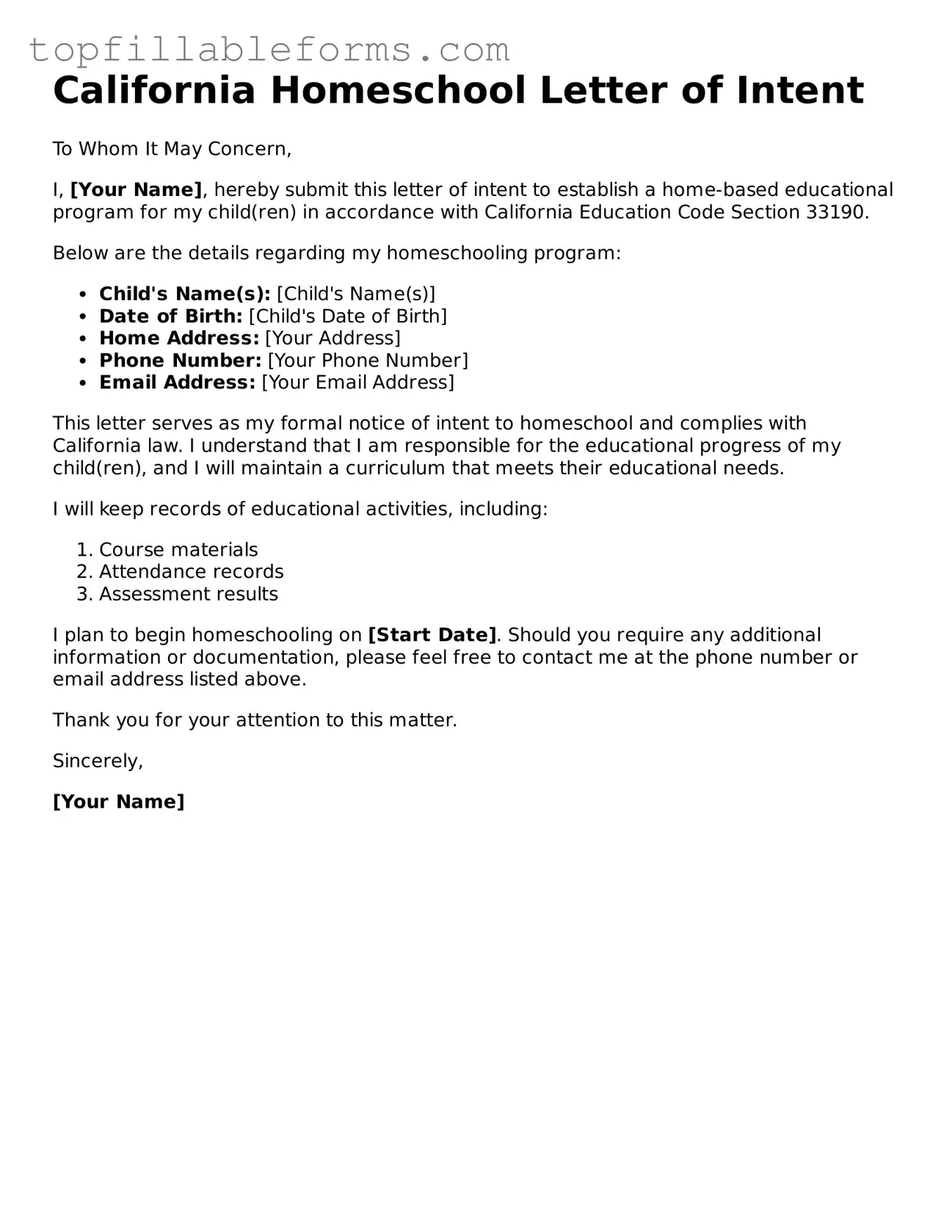California Homeschool Letter of Intent
To Whom It May Concern,
I, [Your Name], hereby submit this letter of intent to establish a home-based educational program for my child(ren) in accordance with California Education Code Section 33190.
Below are the details regarding my homeschooling program:
- Child's Name(s): [Child's Name(s)]
- Date of Birth: [Child's Date of Birth]
- Home Address: [Your Address]
- Phone Number: [Your Phone Number]
- Email Address: [Your Email Address]
This letter serves as my formal notice of intent to homeschool and complies with California law. I understand that I am responsible for the educational progress of my child(ren), and I will maintain a curriculum that meets their educational needs.
I will keep records of educational activities, including:
- Course materials
- Attendance records
- Assessment results
I plan to begin homeschooling on [Start Date]. Should you require any additional information or documentation, please feel free to contact me at the phone number or email address listed above.
Thank you for your attention to this matter.
Sincerely,
[Your Name]
